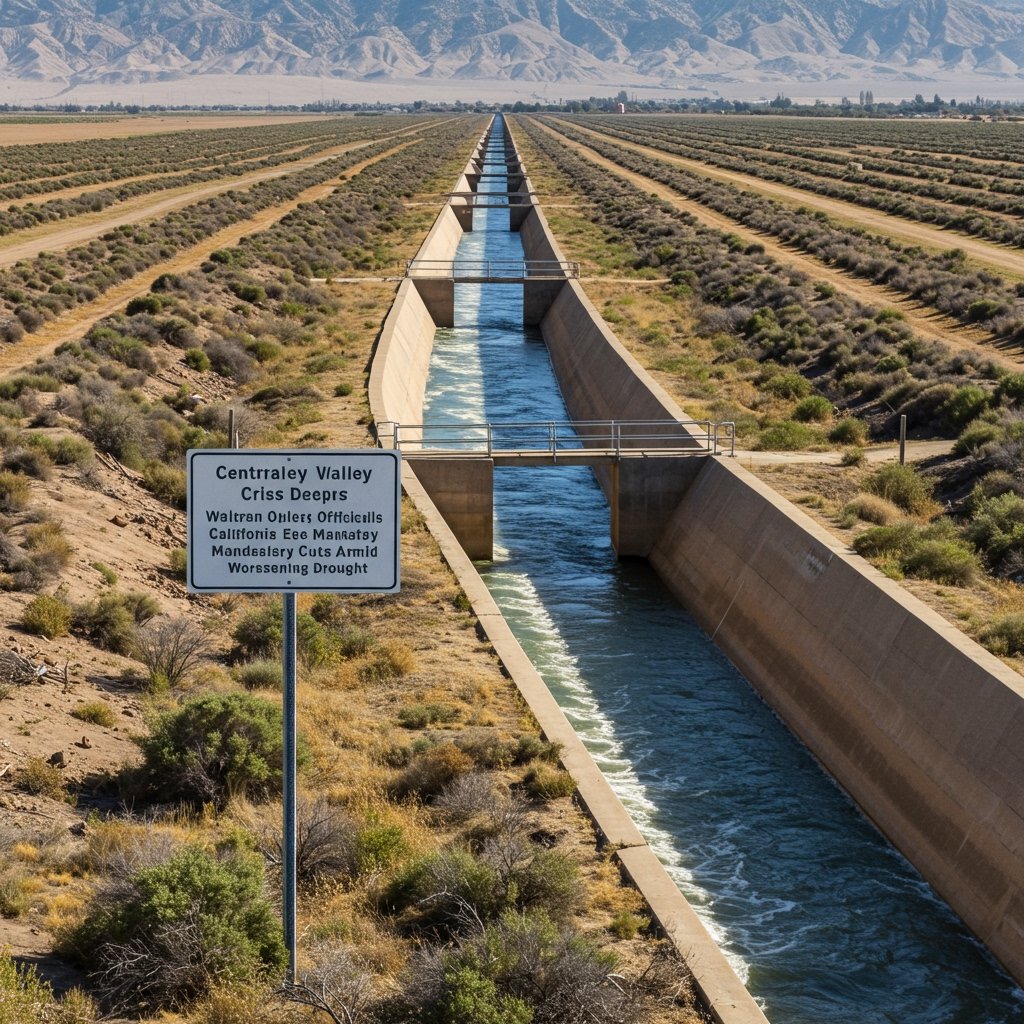Central Valley Water Crisis Deepens: Emergency Measures Considered Amid Worsening Drought
California’s vital Central Valley faces a potentially devastating water crisis as persistent drought conditions continue to grip the state. In response to alarmingly low reservoir levels and a critical lack of significant spring rainfall, California state water officials convened an urgent emergency meeting in Sacramento on April 21, 2025. The high-stakes convocation brought together state water authorities and representatives from agricultural organizations across the Central Valley, the nation’s most productive agricultural region, to discuss the escalating crisis and consider drastic measures.
The meeting, held in the state capital, underscored the severity of the hydrological situation. State officials presented stark data illustrating the precarious state of California’s water supply infrastructure. The Department of Water Resources (DWR), the state agency responsible for managing water resources and the State Water Project, delivered a presentation highlighting critically low storage levels in key reservoirs.
Dire Data from the Department of Water Resources
The data presented by the Department of Water Resources painted a grim picture of the state’s water reserves. Specifically, the report showed that major reservoirs like Shasta and Oroville were significantly below historical averages for late April. These reservoirs, vital components of the State Water Project and key sources for agricultural irrigation in the Central Valley, are typically expected to hold substantial reserves at this point in the year, following winter snowpack runoff. However, meager precipitation and warmer temperatures reducing snowpack have resulted in storage volumes far below what is needed to meet projected demand through the dry summer months. The DWR’s findings reinforced the urgency of the situation, prompting officials to consider unprecedented actions.
Potential Measures: Curtailments and Allocations
The discussions quickly turned to potential mandatory actions necessary to conserve dwindling water supplies. Foremost among the measures being considered are potential mandatory water curtailments for senior water rights holders. California’s water rights system operates on a “first in time, first in right” principle, meaning those with older water rights typically have priority access. Imposing curtailments on senior rights holders is a significant step, usually reserved for the most severe drought conditions, as it impacts some of the state’s oldest and most established water users.
In addition to curtailing senior rights, officials are also considering adjustments to State Water Project allocations. The State Water Project delivers water from reservoirs in Northern California to contractors across the state, including large agricultural districts in the Central Valley. Any reduction in these allocations would directly impact the amount of surface water available to farmers, forcing them to rely more heavily on limited groundwater supplies or face significant cutbacks in irrigation.
Agricultural Sector Sounds Alarm
The prospect of mandatory water curtailments and reduced State Water Project allocations immediately drew sharp warnings from the agricultural representatives present at the meeting. Farmers and their advocates articulated profound concerns about the potential impact of these measures on the current growing season. They warned that these proposed restrictions could devastate this year’s crops. The Central Valley is a powerhouse of agricultural production, supplying a vast array of commodities both domestically and internationally.
Specific concerns were raised regarding the fate of high-value, permanent crops like almonds and cotton, explicitly mentioned as being directly impacted by potential water cutbacks. Almond trees, for instance, require consistent irrigation, and significant water reductions could lead to tree stress, reduced yields, or even tree death, representing a long-term loss for farmers. Cotton, another major commodity grown in the region, is also highly dependent on reliable water supplies for optimal growth. Farmers emphasized that without adequate water, the economic viability of their operations for 2025 would be severely jeopardized.
Representatives from the agricultural organizations stressed the economic ripple effects of a poor farming year. Devastated crops not only mean lost income for individual farmers but also impact farmworkers, processing plants, transportation, and related industries throughout the Central Valley. They argued that while conservation is important, overly stringent or sudden cuts could have catastrophic consequences for the regional economy and potentially impact the national food supply chain for certain commodities.
State Signals Support for Urgent Action
Amidst the urgent discussions and the warnings from the agricultural sector, signals from the state’s highest office indicate a leaning towards decisive action. Governor Newsom’s office commented on the situation, indicating support for “necessary, urgent action” to conserve water statewide. This statement underscores the administration’s recognition of the critical nature of the drought and the perceived need for significant measures to protect water resources for essential uses, including potentially prioritizing municipal and environmental needs alongside agricultural demands in the face of extreme scarcity.
The phrase “necessary, urgent action” suggests the state is preparing to implement measures that may be unpopular but are deemed essential given the current hydrological conditions. While the precise details and timing of any potential mandatory restrictions or allocation cuts remain under consideration following the April 21st meeting, the tenor of the discussions and the state’s public stance point towards the likelihood of significant changes in water management for the Central Valley in the coming months.
The decisions made in the wake of this emergency meeting will have profound implications for the agricultural landscape of the Central Valley, the livelihoods of thousands of farmers and farmworkers, and the state’s overall water management strategy during this period of deepening drought. The focus now shifts to how quickly and in what form these potential restrictions will be implemented, and how the agricultural sector will adapt to what could be one of the most challenging water years in recent memory.



















